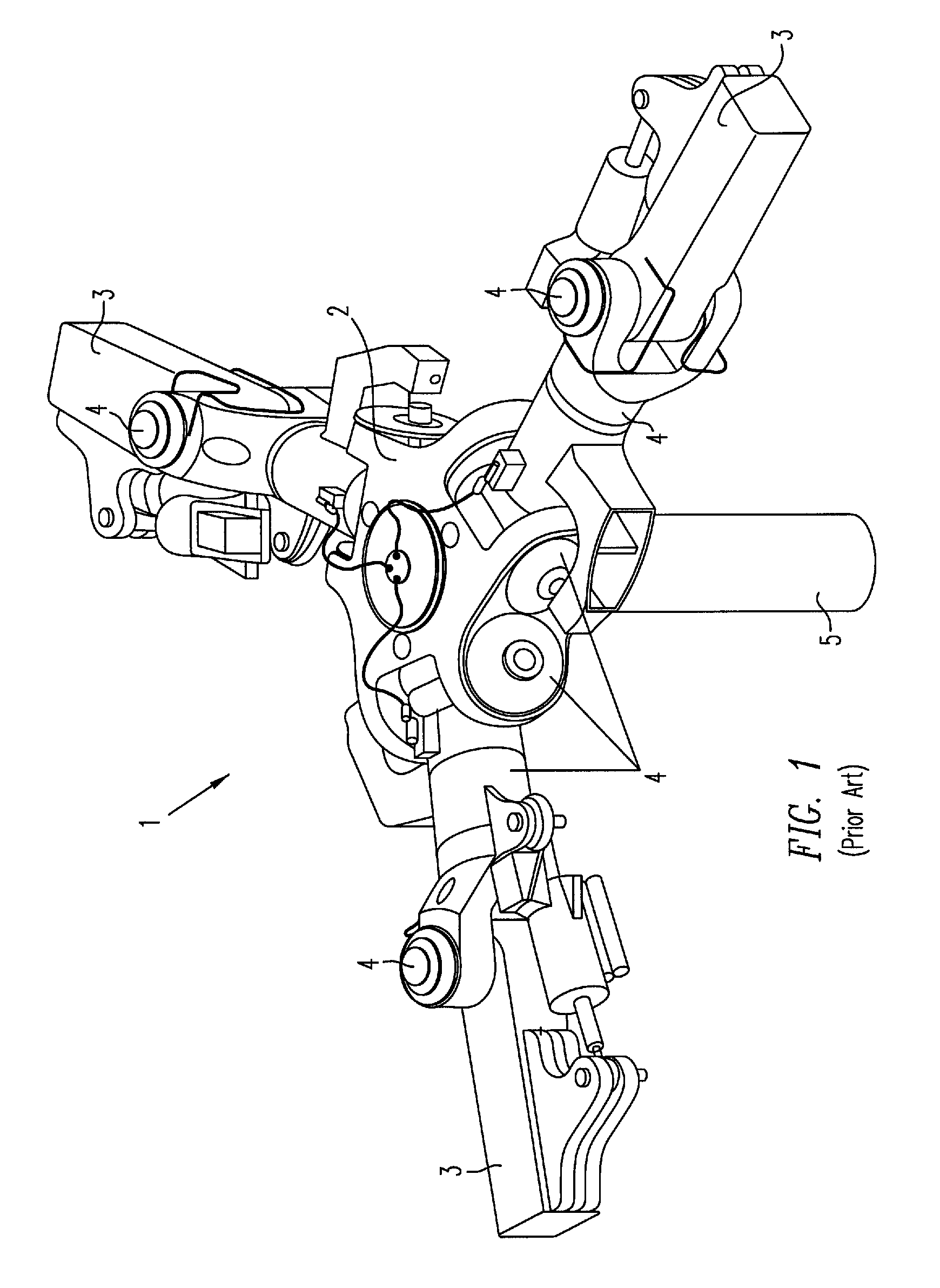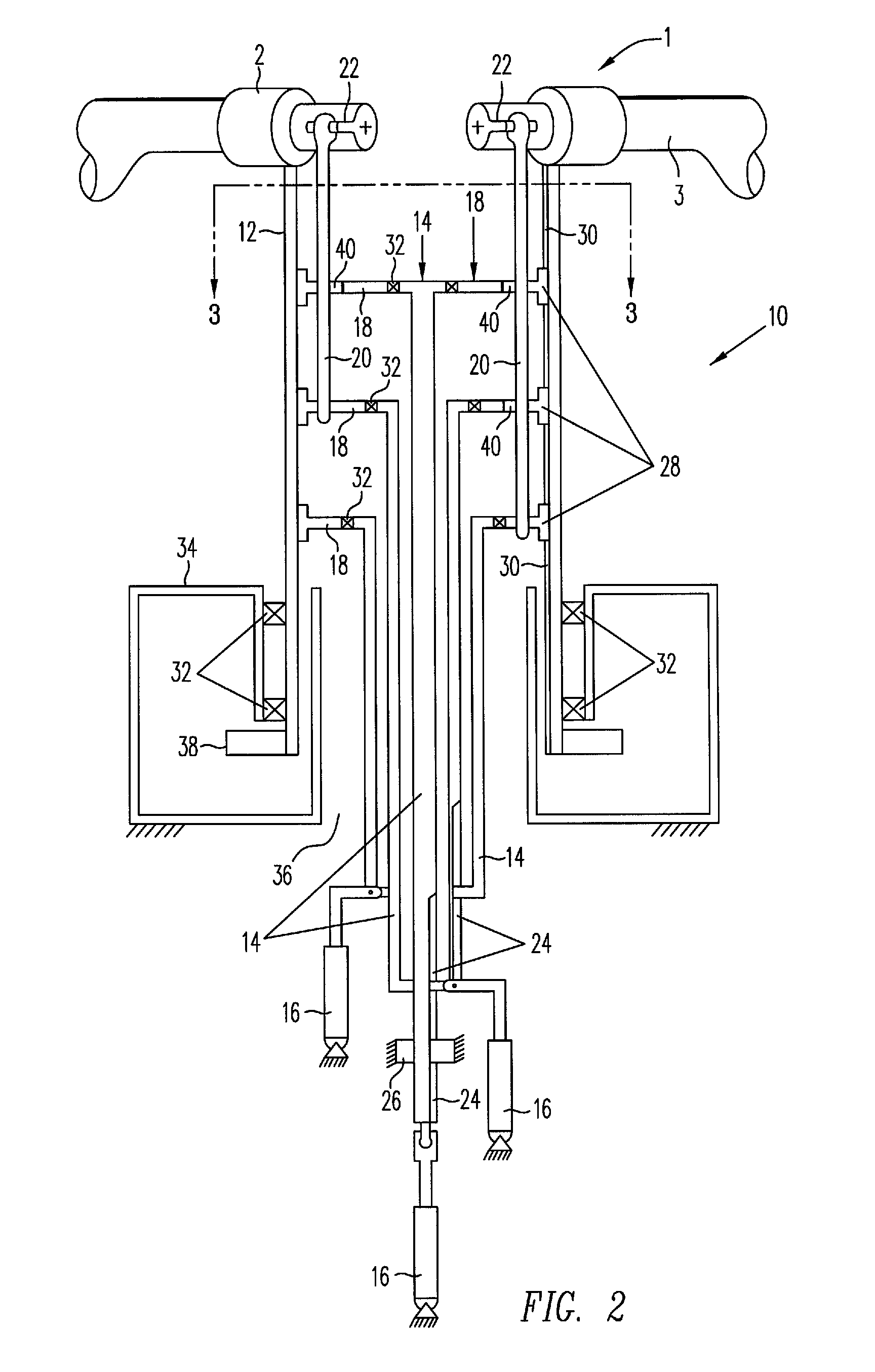Rotor blade pitch control
a technology of rotor blades and rotor blades, which is applied in the direction of rotors, roofs, vessel construction, etc., can solve the problems of increasing the mental and physical work load of the pilot, component fatigue, and limited forward air speed of the conventional rotor aircraft, so as to improve the harmonic individual blade control, reduce vibration, and improve the speed of the rotor aircraft
- Summary
- Abstract
- Description
- Claims
- Application Information
AI Technical Summary
Benefits of technology
Problems solved by technology
Method used
Image
Examples
Embodiment Construction
[0022]FIG. 2 is a partial cross-sectional view of a main rotor 1 of a rotor aircraft (not illustrated) incorporating an exemplary embodiment of a mechanical independent blade control (MIBC) mechanism 10 in accordance with the present invention, and FIG. 3 is a cross-sectional view of the MIBC mechanism 10 of FIG. 2, as seen along the section lines 3-3 taken in FIG. 2.
[0023]In accordance with the present invention, the MIBC 10 provides reliable higher harmonic individual blade control (IBC). The higher harmonic IBC solution, in turn, enables 1) a higher rotor aircraft speed when used in conjunction with reverse flow rotor techniques (i.e., slowed rotor speed, multiple blade pitch cycles per revolution) in a more conventional rotor aircraft design, 2) reduced vibration at high or low speeds in such aircraft designs while minimizing overall aircraft design complexity, thereby avoiding the complexity of tilt rotor aircraft designs and other compound aircraft designs that have addition o...
PUM
 Login to View More
Login to View More Abstract
Description
Claims
Application Information
 Login to View More
Login to View More - R&D
- Intellectual Property
- Life Sciences
- Materials
- Tech Scout
- Unparalleled Data Quality
- Higher Quality Content
- 60% Fewer Hallucinations
Browse by: Latest US Patents, China's latest patents, Technical Efficacy Thesaurus, Application Domain, Technology Topic, Popular Technical Reports.
© 2025 PatSnap. All rights reserved.Legal|Privacy policy|Modern Slavery Act Transparency Statement|Sitemap|About US| Contact US: help@patsnap.com



